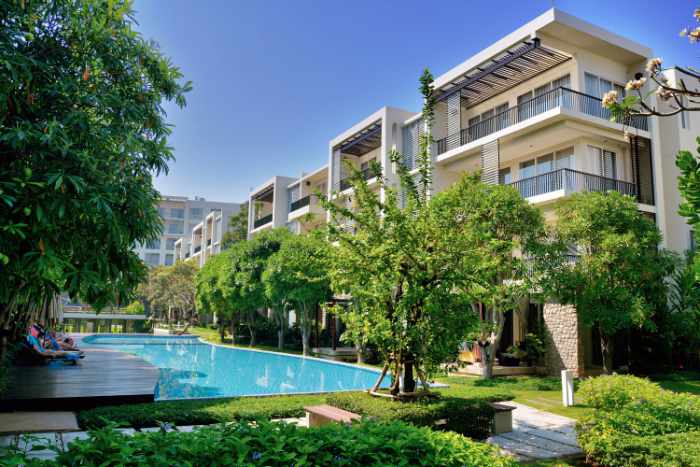The luxury apartment market is evolving quickly, with 2025 bringing fresh changes in design, amenities, and buyer expectations. Luxury is no longer only about an apartment’s location and size. People are looking for smart technology, sustainability, and exclusive lifestyle experiences.

5 Trends in the Luxury Apartment Market
Developers are also responding with innovative features, wellness-focused designs, and eco-friendly construction. As competition among luxury property increases, let’s explore the key trends shaping this market in 2025.
1. Home Designs Focused on Wellness
Luxury apartments are shifting toward wellness-focused designs, integrating features that promote physical and mental well-being. Developers are now incorporating design elements like natural light, green spaces, and other features to improve air quality and the health of residents.
Meditation rooms, spa-inspired bathrooms, and circadian lighting systems are becoming the standards in high-end properties. Other amenities that promote fitness, such as in-unit yoga studios and personalized wellness technology, are also in high demand. These designs cater to the need for a healthier and more balanced lifestyle.
2. Sustainable and Eco-Friendly Luxury Apartments
Sustainability is an important trend in the 2025 market, with developers integrating eco-friendly features to meet increasing environmental concerns. High-end apartments now carry energy-efficient designs, smart home technology, and renewable energy sources like solar panels.
Green roofs, sustainable building materials, and water-saving systems improve the aesthetics and functionality of luxury apartments. For example, the Logan Square Apartment has custom shades that naturally help residents modulate their environment. Overall, this market offers options that help people reduce their ecological footprint.
3. Popularity of Branded Residences
Branded residences are becoming more popular in the luxury apartment market in 2025. They offer exclusivity, prestige, and high-quality service. These luxury properties, usually developed in partnership with luxury brands such as top hotels, fashion houses, and automotive companies, offer residents a unique lifestyle experience.
More buyers are drawn to the smooth blend of premium amenities, solid design, and high-level services. As the global demand for these luxury residences increases, developers are expected to build them in luxury home neighborhoods and resort destinations.
4. Higher Technological Integration in Smart Homes
Most luxury apartments are embracing advanced smart home technology, which improves convenience, security, and efficiency. Residents can control lighting, entertainment, and climate systems through AI-powered automation with mobile applications or voice commands.
Features like keyless entry, biometric security, and face recognition also improve safety and sophistication. Luxury apartments are also being designed with smart kitchens, energy-efficient appliances, and wellness features. As technology evolves, buyers are prioritizing smooth digital integration, with smart home tech being an important part.
5. Spacious Homes with Areas for Remote Work
The luxury apartment market is prioritizing spacious layouts with dedicated areas for remote work to support the changing needs of high-end buyers. As hybrid and remote work become more popular, residents are looking for well-designed home offices with ergonomic furnishings and smart technology.
Developers are shifting to more in-demand apartments with multi-functional spaces, private work pods, and co-working lounges. These spaces aim to improve productivity while maintaining the elegance of luxury living, making them an essential trend in this competitive market.
Endnote
The luxury apartment market is rapidly changing to meet current needs. For instance, home designs are more focused on wellness and environmental sustainability. Branded residences are also becoming more popular. Smart homes have greater technological integration, and high-end homes are better optimized for remote work.



